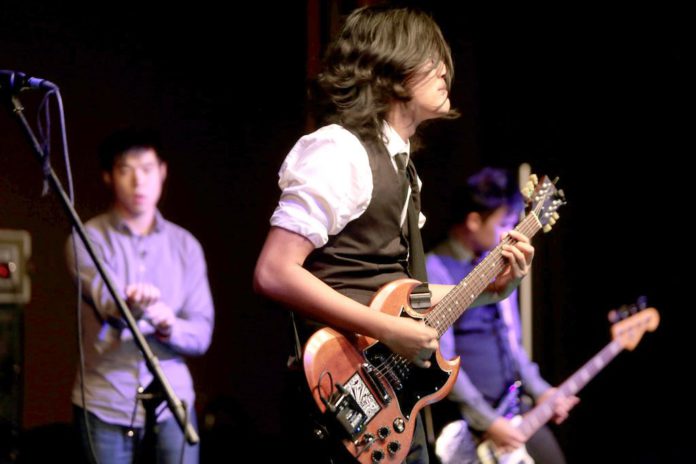

The past year has seen a few shakeups in intellectual property law. The U.S. Supreme Court heard a case dealing with free speech protections for disparaging trademarks as well as how Native American tribes might use their sovereign immunity to protect patents from challenges. The Colorado Bar Association will host its 16th Rocky Mountain Intellectual Property & Technology Law Institute May 31 and June 1 in Denver to discuss these topics, among others. In advance of the event, Law Week spoke to presenters about how recent case law is affecting intellectual property litigation.
Disparaging Trademarks, a Year After Matal v. Tam
In June 2017, the U.S. Supreme Court ruled in Matal v. Tam that the Patent and Trademark Office can’t refuse to register disparaging or offensive trademarks because the disparagement clause of the Lanham Act violated First Amendment free speech rights. The court found the disparagement clause did not meet the strict scrutiny test weighing constitutional rights against a government’s interest in a law or policy that infringes on them.
Just shy of a year later, the decision has already affected at least one other case. And Todd Davidovits, associate general counsel for intellectual property at Anheuser-Busch, believes the reverberating implications could continue even further. Although the Supreme Court did not address the Lanham Act’s clause that prohibits registering immoral or scandalous marks, Davidovits said he doubts the clause would stand up to strict scrutiny in the Supreme Court either.
A case decided by the Federal Circuit Court of Appeals in fall 2017 ruled the clause unconstitutional in the case In re: Brunetti. The USPTO refused to register the mark FUCT for a clothing brand of the same name, reasoning it violated the Lanham Act because it read as the past tense of a four-letter vulgarity. The Federal Circuit reversed the patent office’s decision, ruling the Lanham Act’s bar on immoral or scandalous trademarks unconstitutionally restricts free speech.
Davidovits said the Matal v. Tam decision might also mark a blurring of the line that has existed between trademarks and copyrights. Case law has historically delineated between copyrights and trademarks, considering them two separate intellectual property rights. A trademark is purely a source identifier, while a copyright has an original expressive element.
But Davidovits said Matal v. Tam might have lain the groundwork for courts to consider in the future whether a trademark can have an element of expression. The trademark at issue was for the Asian-American band The Slants, intended to reclaim the word from its use as a racial slur and turn it into a declaration of cultural pride. While the Supreme Court didn’t consider the question of expression in the case, Davidovits said the trademark’s context hints at an expressive element.
But perhaps even more powerful than any Supreme Court decision in influencing the use of disparaging marks is the court of public opinion. Davidovits used the example of major sports networks and team fans condemning controversial names such as the Washington Redskins by refusing to use the names in coverage or buy merchandise.
Even if companies are legally allowed to own such trademarks, widespread public disfavor might force them into irrelevancy.
“At the end of the day, what’s ultimately going to determine whether that trademark is going to have staying power is the consumers.”
Old and New: Inter Partes Review and Sovereign Immunity
Protection from civil action by private parties against state entities and tribes is deeply rooted in U.S. law. The Constitution protects sovereign immunity, while Congress has protected tribal immunity. But while neither concept is new, they have recently found a new application in patent law in defending against inter partes review, a process codified in the America Invents Act that went into effect in 2013.
The U.S. Supreme Court upheld the constitutionality of IPR in 2018 in Oil States Energy Services v. Greene’s Energy Group, but other high-profile cases are using sovereign and tribal immunity to defend against IPR proceedings. In one case, Ericsson Inc. v. Regents of the University of Minnesota, the Patent Trial and Appeal Board ruled that a public university waives sovereign immunity to inter partes review when it files a patent infringement action.
Immunity is “an attempt to crack the IPR process, essentially, to prevent that process from being used to challenge the patentability of a person’s patent claim,” said Lauren Dreyer, a senior associate at Baker Botts.
She said there have been more than 1,000 patent cases involving universities, with 80 percent occurring in the past decade. Universities often patent their research and develop innovations, and she said the claim of sovereign immunity could potentially insulate schools against IPR challenges, depending on how the claim fares. That would “give them a special status that other patent holders don’t have,” Dreyer said.
Implications from cases involving universities have resurfaced in a different case of first impression challenging the validity of patents sold by pharmaceutical company Allergan to the St. Regis Mohawk Tribe. St. Regis Mohawk Tribe v. Mylan Pharmacies, Inc. is currently on appeal in the Federal Circuit Court of Appeals, with oral arguments set for June 4.
Dreyer said the case is one of the first to invoke tribal immunity in defending against an IPR proceeding. The court is also examining whether the sale of the patents to the St. Regis tribe was legitimate, or an attempt by Allergan to dodge the IPR process.
The Federal Circuit has expedited briefing in advance of oral arguments in the case, which happens only rarely, which Dreyer said shows the court is paying close attention to the issues. “What the court is really going to wrestle with is whether the transfer of rights was legitimate, and which party retained enough rights in order to be considered the patent owner.”
— Julia Cardi

